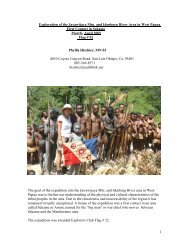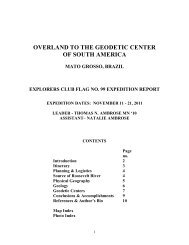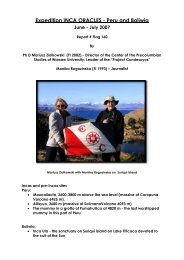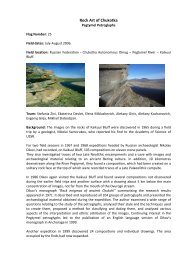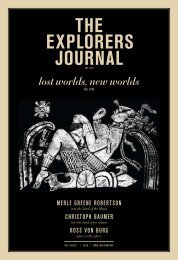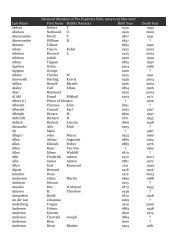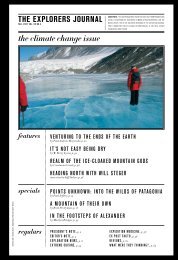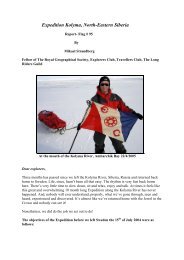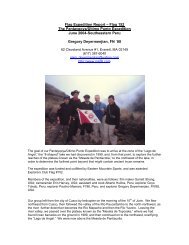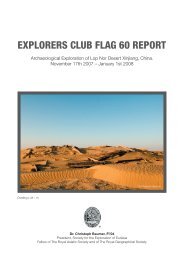the explorers journal - The Explorers Club
the explorers journal - The Explorers Club
the explorers journal - The Explorers Club
Create successful ePaper yourself
Turn your PDF publications into a flip-book with our unique Google optimized e-Paper software.
me a lot more confidence that we had most of <strong>the</strong><br />
critical problems solved, had things under control.<br />
Back in ‘62 you always wondered whe<strong>the</strong>r we had<br />
really thought of all <strong>the</strong> things that might go wrong.<br />
JC: Maybe you could enjoy this one a little more<br />
JG: Oh, you could. <strong>The</strong> purpose of <strong>the</strong> whole<br />
program had changed. In ‘62 we were trying to<br />
determine if we could just make orbital spaceflight,<br />
and we proved we could. Through <strong>the</strong> years, as we<br />
took a preeminent position in <strong>the</strong> space program,<br />
<strong>the</strong> purpose was not just to catch up with <strong>the</strong><br />
Soviets but one where we’re doing research. In ‘62<br />
I had some little experiments, too—spectrometer<br />
readings of <strong>the</strong> sun, stuff like that—but by 1998<br />
<strong>the</strong> whole purpose was fundamental research. We<br />
had 83 projects on that one Discovery flight. Later,<br />
Columbia had 90. We split those up so each of us<br />
had our responsibilities and a strict schedule for<br />
carrying <strong>the</strong>m out. Every day’s mission was routine,<br />
but <strong>the</strong>y did make changes to schedules from <strong>the</strong><br />
ground if you needed more time on a particular<br />
project. Between experiments, too, you had time to<br />
get up and look out <strong>the</strong> window more and enjoy that<br />
16<br />
beautiful view, whe<strong>the</strong>r day or night.<br />
My altitude in ‘62 was 160 miles (257 km)<br />
down to a little more than 100 miles (160 km) on<br />
a slightly elliptical orbit—not as high as we were<br />
on Discovery, about 350 statute miles (563 km).<br />
You’re looking at whole countries and things like<br />
<strong>the</strong> Red Sea just laid out on a map below. You’re<br />
above big wea<strong>the</strong>r systems and you can see <strong>the</strong><br />
whole patterns stretching out in circular form.<br />
Sunsets and sunrises are very different. You’re going<br />
almost 18 times <strong>the</strong> normal rotational speed of<br />
<strong>the</strong> Earth, so <strong>the</strong> sun goes up and down rapidly.<br />
But you also see <strong>the</strong> Sun’s rays channel through<br />
<strong>the</strong> atmosphere following <strong>the</strong> curvature of <strong>the</strong> Earth<br />
down to a termination point, with very brilliant colors<br />
at <strong>the</strong> moment of sunset. <strong>The</strong> Earth’s atmosphere<br />
acts as a prism for <strong>the</strong> light coming to you, and<br />
for a few seconds you see a variance of <strong>the</strong> whole<br />
spectrum—red, orange, yellow, green, blue, indigo,<br />
violet—at <strong>the</strong> same luminous intensity you see only<br />
with reds, oranges, and yellows at sunset on Earth.<br />
JC: Ever regret not landing on <strong>the</strong> Moon<br />
JG: I would liked to have been on one of those lunar<br />
STS-95 mission commander Curtis Brown and payload specialist John Glenn on <strong>the</strong> flight deck of Discovery, November 1, 1998. Image courtesy NASA.



